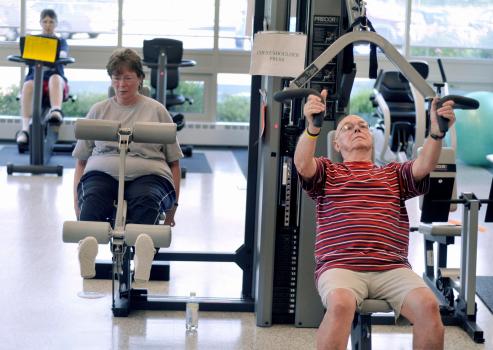Cover picture from the article Senior-friendly gyms cater to baby boomers
Article originally published at www.elitefts.com – link below
So you have decided to open a gym. You have done some market research and you have chosen an area of the city where you have higher chances of succeeding as a business. You may or may not, however, have considered in detail the service you will offer the local community. “Fitness” is no longer enough of a concept for decision-making, and hasn’t been so for some time. The gym market is highly segmented and responds to different needs from consumers. Some middle to higher end chain gyms try to offer a little bit of everything, with a highly sophisticated partitioning of the spatial environment for optimal level of private space preservation. Others, like Planet Fitness, offer the cheapest fitness alternative and a high level of private space preservation.
The first thing that stands out looking at the various strategies adopted by gym owners is that the commercial gym is a complex social environment where different goals and projects are pursued and where there will necessarily be some social interaction. Whether harmful or positive, ghetto-like and exclusive or pasteurized and inclusive, it depends on hard choices made by the owner.
In this article, I invite you to consider simple choices concerning space arrangement, staff training, and member customer service through the following items:
- Who does your gym serve?
- How is space socially segmented?
- How does the gym environment foster member goals and projects?
- How can you make a difference?
Here you will be introduced to some tools from the social sciences that have been shown to be useful to answer these questions.
Tips for future business owners and a guide for equipment purchase have already been published here:
- How to Know If You Should Open a Gym
- Gym Business: What I Wish I Knew When I Started
- Three Phases of Purchasing Gym Equipment for New Gym Owners
Who does your gym serve?
The answer to this question only partly depends on you (the gym owner). Consider, for example, a middle-class area in one of DC’s satellite cities where you find a CrossFit box, a Onelife Fitness club, a rec center, and a few specialty facilities (a Pilates studio, a yoga club, a dance studio). People will gravitate towards the facility that best serves them. Competitively driven and professionally successful adults might find that the CrossFit box is for them, while the less interactive, equally successful (or not) ones will choose Onelife Fitness, where they will have a little of everything; they may reserve one day to isolate themselves and do laps at the pool or join a class in the “CrossFit-like” space if they are feeling more sociable. The busier or more financially constrained people will choose the rec center. The specialty facilities are predominantly chosen by people who avoid the “gym culture” for one reason or another.
Your competitors practice prices ranging from $50 to $130 per month.
But you might have identified social segments whose needs are unaddressed or only partially addressed in the area. Sometimes that happens accidentally and not as a result of a detailed market research. Non-chain gyms have a way of shaping themselves to the community. Suppose yours is “discovered” by a group of older people, or a community of mountain climbers, or a weight loss club, or local high school wrestling kids. You may offer folders with information about weight loss from reliable organizations and you may organize weekend seminars about the issues these groups are interested in. The challenge is to understand your demographic, their characteristics, their expectations, and also their frustrations.

